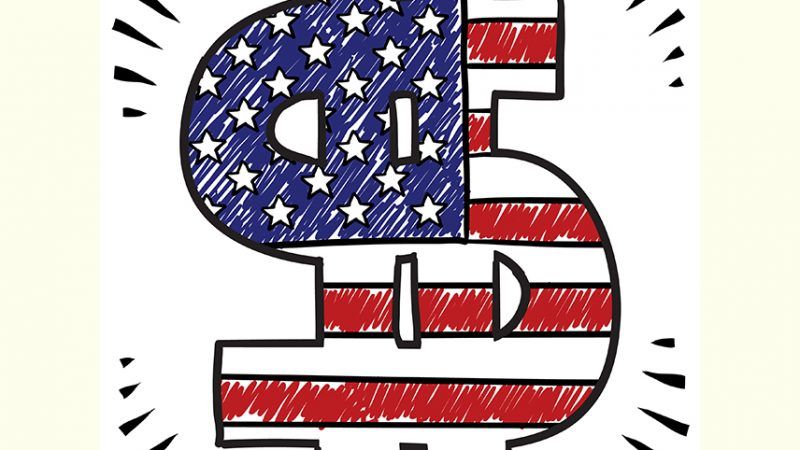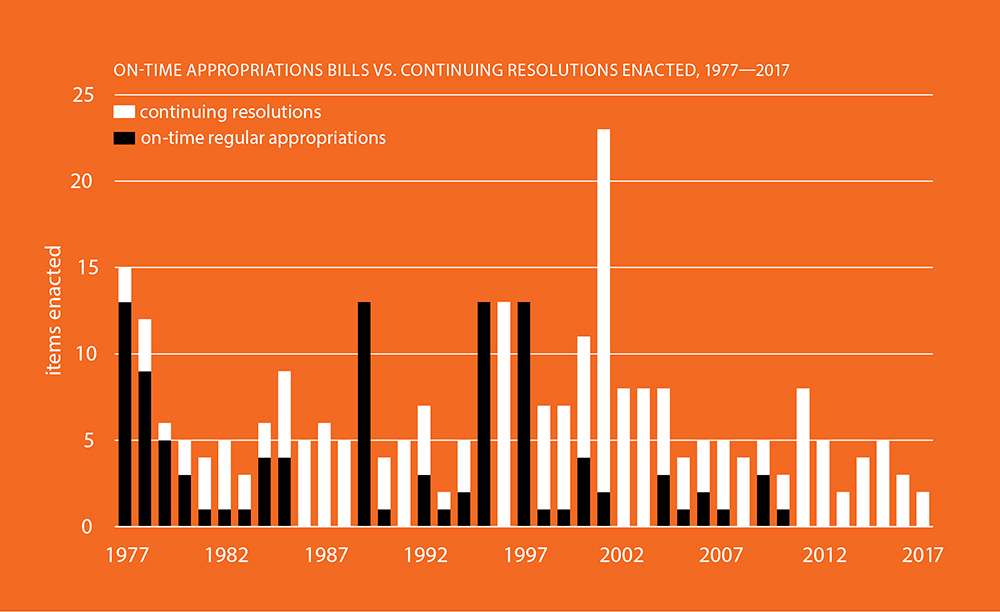Congress Is Bad at Budgeting
But continuing resolutions aren't the problem.

Congress is dysfunctional—and nothing illustrates that like the body's increased reliance on short-term funding bills in place of comprehensive budgets, right? These continuing resolutions (C.R.s) are often used in times of crisis to prevent a government shutdown when Democrats and Republicans can't agree enough to pass any of the 12 regular appropriations bills before October 1, the beginning of the next fiscal year, as required by the Congressional Budget Act of 1974.

Yet a look at the data suggests that the number of C.R.s hasn't actually spiked in the last few years. According to the Congressional Research Center, between 1977 and 2018, Congress has enacted an average of 4.4 continuing resolutions per year to keep the government running. While there has been an uptick in their use, it started way back in 1997. Before then, the annual average was 3.3. Since, it has jumped to 5.1. At its worst, Congress passed 13 C.R.s in 1996 and 21 in 2001.
A better measure of congressional dysfunction is the number of regular appropriations bills enacted on time by Congress. That tally has plummeted since 1977 and stalled at zero since 2010, mostly thanks to the Senate. The House of Representatives passed all 12 appropriations bills for fiscal year 2018, for example, only to watch each one die in the upper chamber.
Sources: Congressional Research Service, "Continuing Resolutions: Overview of Components and Recent Practices"; U.S. Congress, "Appropriations for Fiscal Year 2018"
This article originally appeared in print under the headline "Congress Is Bad at Budgeting."


Show Comments (31)